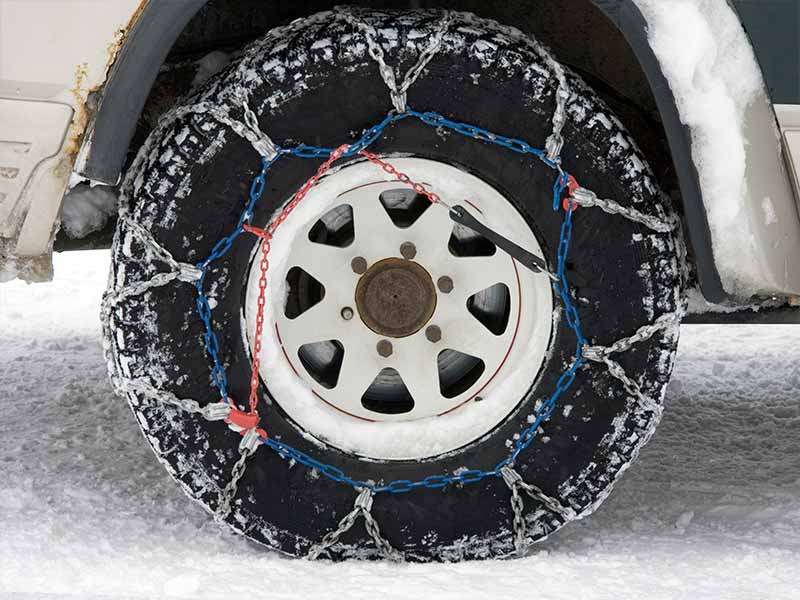Winter is coming! With its snowy landscapes and chilly charm, it can be a wonderland for some, but for drivers, it often means trouble. Navigating the slippery, icy roads can feel like an extreme sport. But what if there was a way to conquer those intimidating winter roads like a pro?
How Many Inches Of Snow Require Chains?
The requirement of tire chains greatly depends on local laws, weather conditions, and road safety regulations. Typically, chains are recommended when there are at least 3 inches of compacted snow or a layer of ice on the road.
In this article, we’ll dive into the snowy world of tire chains, answering key questions like when to put them on, how many tires need them, and how to handle them properly. We’ll also delve into alternatives like snow tires, studded tires, and all-weather tires, and discuss how these winter driving aids can help you navigate even the iciest conditions.
Let’s take a closer look.
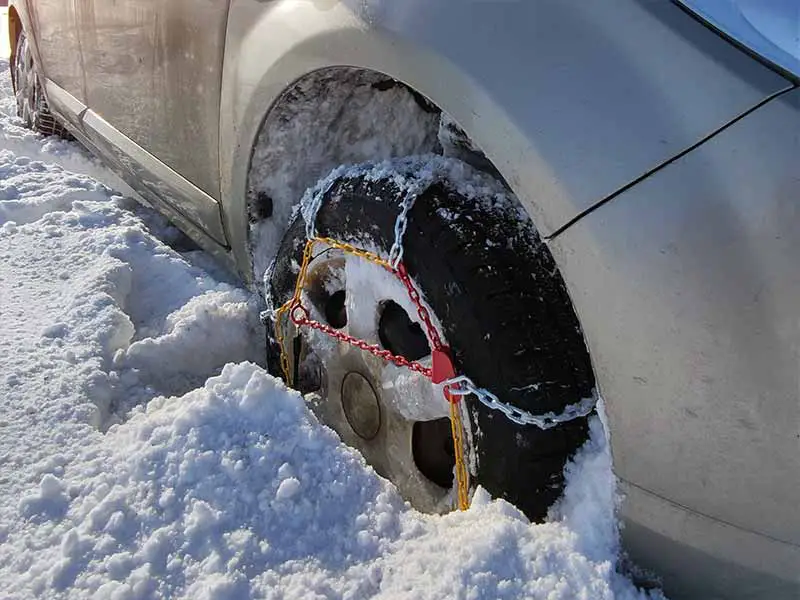
When to Use Tire Chains
Snow is a tricky thing. A light dusting might not need chains at all. A couple of inches? Now we’re talking chains. But there’s more to it than just how much snow is on the ground. You also need to consider the type of snow (is it wet, dry, icy?) and the condition of the roads. If the road is icy or covered in compacted snow, chains can be a great help.
Typically, you should consider using tire chains when there’s about an inch of compacted snow or ice on the road. Chains aren’t really meant for clear roads or light snowfall. Using chains on clear roads can damage both the road and your tires, so remember: chains are for serious snow situations.
State Laws and Guidelines
Another factor in the “when” question is where you live or where you’re driving. Some states have strict rules about when and where you can use tire chains. For example, in some areas, when you see a sign that says “Chains Required,” it means you’ve got to have them on your tires, or you’re not going anywhere. It’s important to know your local regulations to stay safe and legal.
Four-Wheel Drive Vehicles
If you’ve got a four-wheel drive (4WD) vehicle, you might be thinking, “I’m all set for snow!” While it’s true that 4WD can give you better traction in snowy conditions, it doesn’t make you invincible. Four-wheel drive helps you start moving and keep moving, but it doesn’t always help you stop. In slippery conditions, tire chains can provide that extra stopping power to keep you safe.
In some states, 4WD vehicles are exempt from chain requirements, but it’s always a good idea to carry chains just in case. Plus, in extreme conditions, even 4WD vehicles might need chains. Remember, better safe than sorry!
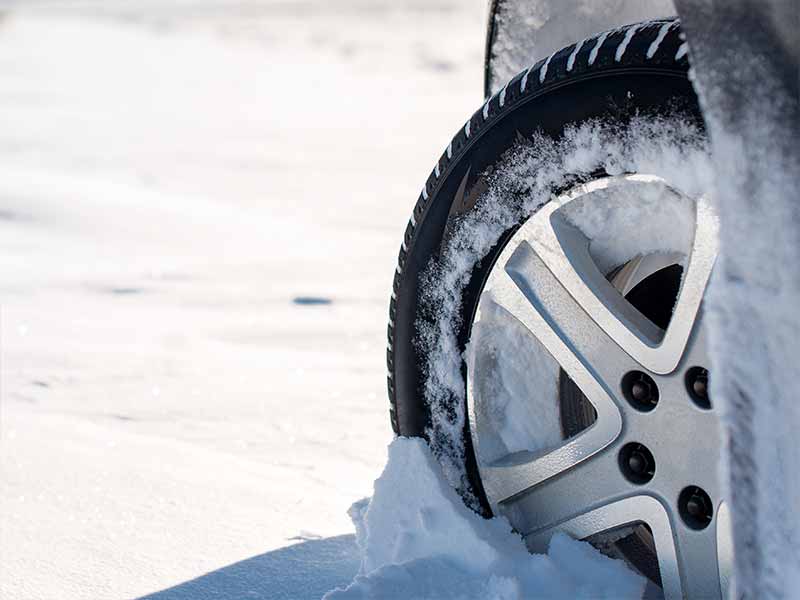
How Many Tires Should Have Chains
In the world of tire chains, there’s a bit of a debate about whether you should put chains on just two tires or all four. Here’s the deal:
- Two Chains: If you’re going to use just two chains, they should go on the drive wheels of your vehicle. That means if you have front-wheel drive, they go on the front. If you have rear-wheel drive, they go on the back. This gives the tires that are doing the heavy lifting (or in this case, driving) the extra grip they need.
- Four Chains: But what about putting chains on all four tires? Well, it’s not a bad idea. Having chains on all four tires can give you better control and stability, especially if you’re driving in deep snow or dealing with a lot of ice.
Passenger Cars Vs. Trucks
Now, let’s think about what type of vehicle you’re driving. If you’re driving a passenger car, two chains on the drive wheels are usually enough to give you the extra traction you need. But if you’re driving a larger vehicle like a truck, you might benefit from having chains on all four tires. This is because trucks are heavier and may need the extra grip to stay stable on slippery roads.
Safety First
Remember, the goal here is safety. Having chains on your tires is all about making sure you can navigate snowy and icy roads without slipping and sliding. Whether you choose to use two chains or four, the most important thing is that you’re comfortable with how your vehicle handles and that you feel safe.
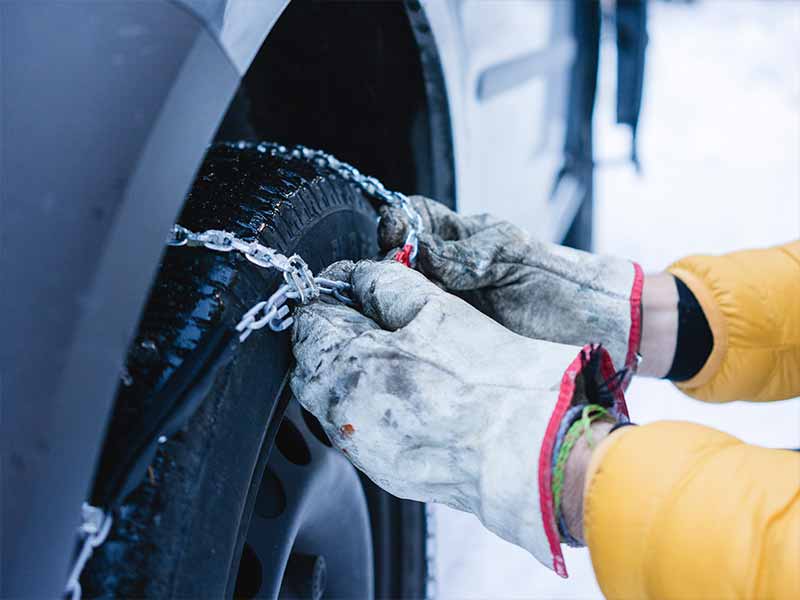
Proper Handling of Snow Chains
Now that we know the ‘what’, ‘when’, and ‘how many’ of tire chains, let’s chat about the ‘how’. How do we put these things on, take them off, and most importantly, how do we drive with them?
Putting On and Removing Snow Chains
It’s cold, it’s snowing, and you’re standing outside trying to wrestle chains onto your tires. Not exactly a fun time, right? But don’t worry, with a bit of practice, you’ll be a tire chain pro in no time. Here are a few tips:
- Practice Makes Perfect: Don’t wait until it’s snowing to try to put on your chains. Practice in your garage or driveway when the weather is nice.
- Follow the Instructions: Your chains will come with instructions. Read them carefully. Every chain is a little different, so it’s important to follow the guidelines for your specific chains.
- Keep Your Gloves On: It’s going to be cold out there, so keep your gloves on. But make sure they aren’t too bulky that you can’t handle the chains.
When it’s time to take off the chains, it’s usually a simpler process. Just unhook the chains and gently pull them off. Be sure not to do this on a part of the road where you might leave them behind, though!
Overnight Chain Stays and Safety Considerations
Okay, you’ve got your chains on, and now you’re ready to park for the night. Do you need to take off the chains? Well, if you’re parked safely and you’ll be driving on snowy or icy roads again in the morning, it’s usually okay to leave them on. But if the roads will be clear or if you’re parked in a public place, it’s a good idea to take them off.
Driving with Chains: How Fast Can You Go?
So, you’ve got your chains on and you’re ready to hit the road. But don’t hit it too fast! When you’re driving with chains, it’s important to keep your speed down. As a general rule, you should not exceed 30 miles per hour (mph) when driving with chains. The chains can break if you go too fast, and nobody wants that!
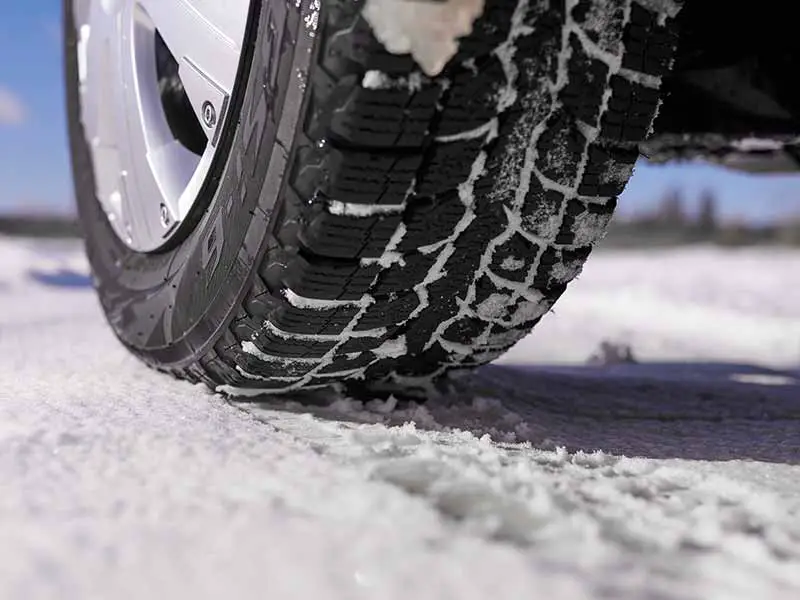
Understanding Tire Chain Laws
Ready to dive into some law stuff? Don’t worry, we’ll make it as painless as possible. This section is all about understanding the different laws around tire chains. Because as it turns out, what’s perfectly fine in one state might be a big no-no in another.
Chains? Where We’re Going, We Need Chains
In some states, tire chains aren’t just recommended – they’re required. This is especially true in states that get a lot of snow and ice. When the weather gets bad enough, you might see signs that say “Chains Required.” When you see this, it’s not a suggestion. It’s the law.
There might be exceptions to these requirements, like if you’re driving a four-wheel drive vehicle or if your car is equipped with snow tires. But in general, when you see a “Chains Required” sign, it’s time to pull over and put on those chains.
Where Chains Fear to Tread
On the flip side, some states have laws that restrict or even forbid the use of tire chains. That’s because chains can be tough on roads. When the weather doesn’t warrant it, chains can cause a lot of damage.
Knowing Your Local Laws
Since laws can vary greatly from state to state, it’s crucial to know the laws in your own state as well as any states you might be traveling through. The good news is that this information is readily available online or by contacting your local Department of Transportation.
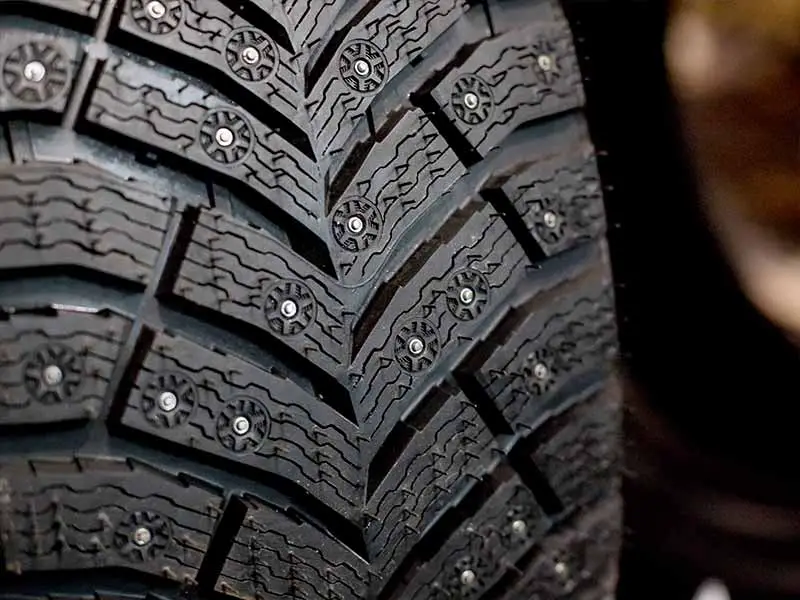
Other Options: Snow Tires, Studded Tires, and All-Weather Tires
Now that we’ve got a good grip on tire chains and their rules, it’s time to explore some other options. Let’s talk about snow tires, studded tires, and all-weather tires. These guys are the other superheroes of the winter driving world.
Snow Tires
Snow tires are specifically designed to perform well in winter conditions. They have special tread patterns and rubber compounds to handle cold temperatures, snow, and ice. If you live in a place with long, snowy winters, you might want to consider getting a set of snow tires.
One thing to note is that snow tires aren’t meant for all seasons. When the weather warms up, you should switch back to regular tires. Why? Because the softer rubber used in snow tires can wear down quickly in warmer weather.
Studded Tires
Studded tires are like snow tires with a bit of extra bite. They have small metal studs that can dig into ice, providing excellent traction. They can be a great option for those dealing with lots of ice.
But, there’s a catch. Studded tires can be rough on roads, so many states have restrictions on when and where you can use them. Some states only allow them during certain months, while others don’t allow them at all. So, make sure to check your local laws.
All-Weather Tires
Last but not least, let’s talk about all-weather tires. All-weather tires are a sort of middle ground between regular all-season tires and snow tires. They have better snow and ice performance than all-season tires but aren’t as extreme as snow tires. Some states consider any tire marked with the Mountain/Snowflake symbol to be an all-weather tire.
Resources
Below are some links you may find helpful when learning about tires
- Tire chain laws by state – Tire Chains R Us
- Chains for tires 101: When should you use tire chains for cars? – NAPA
Final Thoughts
With its scenic snowfall and frosty landscapes, winter brings its own set of adventures. But remember, when it comes to those icy, slippery roads, you’re no longer just a driver, you’re an athlete in the winter driving sport!
And what’s the key to excelling in any sport? Preparation and understanding your equipment. Whether you go for tire chains, snow tires, studded tires, traction tires, or snow socks, understanding when and how to use them will give you the edge. Remember, these tools are more than just metal or rubber; they are your teammates in conquering the winter roads.
Good luck and happy motoring.
